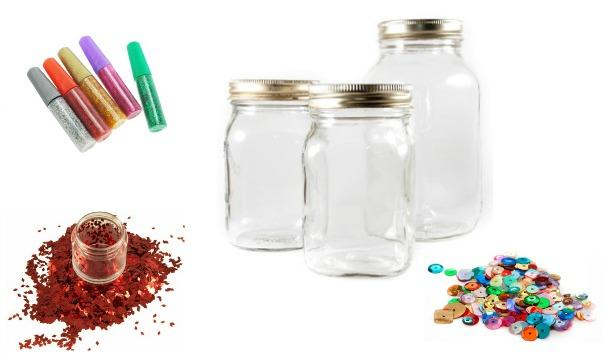
One of the hardest skills for any person to develop is how to stop an emotional and physical eruption from happening or how to cool ourselves down once it has. We call these explosions “tantrums” in children, but adults have these, too. I call an adult freak-out a bigtrum: big person tantrum.
While reading Jamie Glowacki’s book Oh Crap! Potty Training, I came across the term “Calm-Down Jar” for the first time. It seemed like a great idea so I tried it out on my young family. It has worked quite well so far! You can use the gathering of the items to create the jar and making the jar itself as quality attachment tank filling time.
![]() RELATED: 33 Phrases to Stop Toddler Tantrums
RELATED: 33 Phrases to Stop Toddler Tantrums
I believe it helps children to calm-down (I made one for myself, too!) because the shaking action releases emotional energy and the swirling glitter creates some space and time for the autonomic nervous system (ANS) to slow down. This is the system that kicks into gear when we get revved up: the fight-or-flight reaction. As we watch the glitter and shiny objects float around, our breathing and heart-rate has a chance to lower, and our thinking can go from the irrational “reptilian mind” types of thoughts like, “I hate you!” to the rational mind like, “I am angry because…”
You will need:
The order of operations: (I recommend making these on a counter close to the sink)
It is important that your child not feel (s)he is in a power struggle with you about the calm-down process. Telling your child what goes into the jar or when to use it might keep the reptilian brain activated. I call this part of the mind the “cobra” part—you wouldn’t want to poke it, would you?!
As with the eating suggestion in this post of phrases to use with toddlers, when you sense your child is about to lose it, make the jar available as a gentle reminder without demanding the child use it. If (s)he feels that getting the jar is her/his idea, it is more likely to be successful as a calming tool.
Be a calm-down jar role model by walking your child through the process of using it when you feel mad. When you feel your blood start to boil, tell your child something like this: “I am starting to feel angry bubbles inside of me. I’d better find my jar.” Talk to yourself while you walk to the jar: this demonstrates how to initiate the shift from the reactionary mind (reptilian) to the responsive one (cerebral cortex). “Okay, cool down. Breathe. Find the jar.”
When you get the jar, shake it and use feelings words to explain how you feel. For example, “I am angry that the dryer broke!” Stay focused on calming down, “I’m going to have to find a way to dry all these wet clothes. Ugh! I’m so mad!” Sit and watch the water, shaking it a few times if you need to. Just quietly watch the glitter—this time is where the emotions have a chance to process.
![]() RELATED: 8 Ways to Reduce the Stress of Parenting a Toddler
RELATED: 8 Ways to Reduce the Stress of Parenting a Toddler
Once you have regrouped, move the focus from identifying feelings and pausing to letting them process to problem solving. You could say something like this, “Okay, I’m feeling less mad. I know I won’t hurt me, you or things. What am I going to do? How can these clothes get dry?” Give your child a chance to offer some suggestions. You might say, “What are my options?” This is the phrase we want our children to think of when they are melting down and you aren’t around.
Finally, decide on an action plan to solve the problem. For example, “Okay. I can hang these clothes up on the drying rack and around the bathroom or I can see if Cathy across the street can dry them for us. Then I’d better find out why the dryer isn’t working and get it fixed.” Key words for an action plan are: What do I need? Help? To talk? To do better (learn more)? Ideas? To try again? To be clear?
Here is a summary of the steps:
Please remember that it takes a lot of repetition to learn something new. Continually use the calm-down jar or whatever tool helps your child to chill out. Don’t give up if it doesn’t work the first time! Be a role model, use the calming tool over and over, and remember the five steps of a calm-down plan.
If you would like more parenting resources and support, I invite you over to my Facebook page.